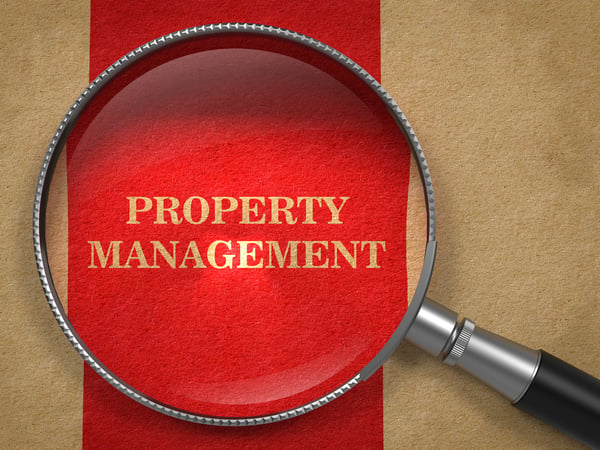By Rohit Kothare on Jul 30, 2020 6:13:12 PM
Here are some common FAQs when it comes to home registration.
1. What Is Meant By Stamp Duty?

As per the provisions of Section 3 of the Indian Stamp Act, 1899, the stamp duty is a tax levied by the government of India on the transfer of ownership of real estate or property. It is levied on transactions involved in residential, commercial, and freehold or leasehold properties.
So what is stamp duty in India?, When you buy a real estate property, only the mere physical possession of the property is not sufficient. Stamp duty and registration charges are evidence of legal ownership of the property.
The stamp duty is dependent on the value of the property, which depends on factors such as type of property, age of the property, location, etc. It is important to consider this in your financial planning while buying a house.
As per the constitutional arrangement, stamp duty is levied and collected by the state government. As it is imposed by the state, rates vary from state to state. A document on which the stamp duty is paid is legally permissible and it can be presented as evidence in the court of law. The tax amount payable depends on the value of the house or the property during the time of registration. Besides property transactions, stamp duty is also levied on other documents including letters of credit, promissory notes, and bills of exchange.
2. Which Property Documents Require Stamp Duty?

Stamp duty is legal evidence of ownership or transfer of a property. After a property is purchased that's when is stamp duty payable on property? mandatorily.
It is usually paid at the time of property registration. The stamp duty is payable on all transfer instruments before registration except in the case of transfer by will. The rates may differ from state to state.
Every state in the country has a different stamp duty rate structure. Some of the documents, which require stamp duty, are listed below:
- Transfer instruments
- Deed of partition
- Reconveyance of the mortgaged property
- Gift deed
- Exchange deed
- Tenancy agreement
- Power of attorneys
- License agreement
- Lease deeds
- Mortgage deed
- Certificates of sale
Related Post- Home Loan FAQs
3. How And When Is The Stamp Duty Paid?

The person who is responsible for paying stamp duty will have to pay the same before or at the time of executing the deed.
There are three ways on how does stamp duty get paid?:
- Through physical stamp paper
This is the most traditional way of paying stamp duty. You purchase non-judicial stamp paper from an authorised vendor, the transaction details can be written on it. However, finding an adequate vendor can be a difficult task. Also, the paperwork gets complicated when the amount of duty is high. Therefore, this method is not preferred by many.
- E-stamping
To avoid counterfeit stamp papers and make stamping easy, the Government has introduced E-stamping. E-stamping is compulsory in some states. Stock Holding Corporation of India Limited (SHCIL) has been appointed as the official vendor for the payment of stamp duty on house purchases. Once you pay the same, you will get an E-stamp certificate.
- Franking
An authorised franking agent puts a stamp on your document, indicating that the stamp duty has been paid. Every state has a minimum amount prescribed for franking. You need to pay 0.1% as charges for franking. The franking fee gets adjusted against the stamp duty at the time of execution of the sale deed.
Have a look at upcoming residential projects in Pune.
4. Do I Need To Pay Stamp Duty On All The Documents Forming A Part Of A Property Transaction?

As per the Indian Stamp Act, 1899, what is stamp duty on home loan?, it is measured to record and keep track of all the transactions. It works almost like a proof for deal closure. In the court of law, it is a legal entity and acts as evidence in cases of dispute. The rate of stamp duty varies from state to state.
The buyer who is responsible for paying stamp duty is levied the same on certain documents including exchange bills, credit letters, insurance policies, transfer of shares, proxies, receipts, debentures, and promissory notes. When more than one document forms a part of a transaction, such as a mortgage or settlement, the stamp duty is required to be paid only on the primary document.
But the remaining documents are to be stamped compulsorily with INR 1/- (Rupee One Only) stamps. Only the document, which has been executed by the highest guarantee, requires payment of the stamp duty and other documents are exempt from being paid, but have to be stamped.
5. Does A Document Need To State How The Stamp Duty Has Been Calculated?

Though it is not a common practice, one should always state in a property document, when is stamp duty paid on a house purchase? and how it has been calculated. The information on stamp duty calculated should always include all the facts and circumstances, which affect stamp duty. There is a difference in what is stamp duty on commercial property? and residential property.
In case, if you are taking the benefit of a stamp duty exemption, then you must state about the stamp duty exemption in the document. You may hire and engage an advocate who can evaluate the stamp duty properly, valuing your property and drafting such a clause for your document.
The calculation of the stamp duty rates is done on the basis of the current market value of the concerned property. The rates are assessed at the start of each year and made public via the stamp duty ready reckoner.
The duty on home loan and the duty on commercial property may vary state to state. Usually, you need to pay between 5-8% of the property value. Additionally, you need to pay about 1% registration charge over and above the stamp duty, which again depends on the state of the property registration.
6. What Are The Consequences Of Non-payment Of Stamp Duty?

Stamp duty is levied on transactions involving residential property, commercial property, and freehold or leasehold properties. Typically, it is payable on the property before the day on which the deed is executed or on the day of execution.
So what is stamp duty and registration charges? Stamp duty has to be paid before the execution of transactions. If one fails to pay the stamp duty on the day of registration, one can also pay the same on the next working day of the date of execution of the transaction. Any further delay in the payment of stamp duty will have consequences of non-payment of stamp duty. The penalty for non-payment will be at 2% per month up to a maximum of 200% of the remaining amount.
Therefore, it is advisable that the stamp duty is paid in full and on time during the time of registration. If the compulsory stamp duty on a document is left unpaid, your property won't be considered as registered.
Your document cannot be accepted or received as evidence. A transaction is then considered invalid if it is done on the basis of a document not duly stamped. Further, documents presented to any public officer will be impounded and the stamp duty will be levied with a penalty.
7. How Do I Determine The Market Value Of Property For The Purpose Of Payment Of Stamp Duty?

As per section 47A of the Indian Stamp Act, 1899, the market value of a property can be determined if it was sold in the open market. As stamp duty is collected by the state government, you can approach your state’s concerned sub-registrar and district registrar office. The market value of the property can be determined by referring to the market value guidelines registers, which are published and sold through state offices.
The market value of the property is the price at which a person is willing to buy and a seller is agreeing to transfer the property at an arm’s length transaction. Stamp duty is levied on the circle rate or the agreement price, whichever is higher.
The agreed price is then noted on the stamp duty documents and is considered as the market value of the property. In Maharashtra, the stamp duty leviable on a gift deed is calculated on the basis of the property’s market value. If the gift deed of a property is made to a family member, such as husband, wife, brother, or sister of the giver, the stamp duty chargeable on the property shall be at the same rate as specified, or 2% of property’s market value, whichever is less.
Related Post- How to Save Tax on Real Estate Investment?
8. What Is Circle Rate?

The real estate market is led by two kinds of costs- market rate and circle rate. The circle rate is defined as the minimum price at which any real estate asset has to be registered after being transferred. Circle rates are set by the state government’s revenue department. They are merely speculative at which a commercial property, apartment, or house is sold or transferred and can be different in the localities within the same city.
Although in most cities, properties are sold above the circle rate. While in some cases, the property might be sold at the prescribed circle rate. The purpose of setting the circle rate is to put a check on the speculation of property prices. Circle rates are updated by the state governments at regular intervals to keep it in line with market rates. These rates act as an indicator of property prices in a particular area.
A buyer has to register the property on the actual transaction value or at the prescribed circle rate, whichever is higher. Usually, the market rate of the property is higher than the circle rates. Circle rates are also known as guidance value and ready reckoner rates in other states.
9. How Is The Circle Rate Different From The Market Value?

To make an informed decision, it is important for you to understand the difference between the market rate and circle rate. Even though circle and market rates are connected, both have limited impact on each other. The circle rate is always lower than the market rate.
Market value is the price that a buyer pays for a property. Market value is the real value of an asset for a transaction between a buyer and a seller. The market rate is usually decided based on the seller's expectation of price and is adjusted according to the buyer's propensity to pay. It is a price range arrived by the demand and supply, looking at actual transaction rates in a place. A location with low supply but having a high demand will certainly ask for higher rates if compared to other areas.
The circle rate of a property is just an indication of the market condition and is not the actual price of the property. Circle rates are not reviewed regularly to keep them in line with the market rates. There is no price index to govern the real estate prices in India, thus circle rates are used as a tool to keep a check on artificial speculation in property prices.
10. Does Stamp Duty Need To Be Paid On The Circle Rate Or Market Value?

Whenever a property is sold, stamp duty and registration charges are paid by the property buyer. How to pay stamp duty on property? is usually on the market value or the circle value, whichever is higher.
The stamp duty payable on the circle rate of a property depends on various factors such as status of the property, location of the property, depending on if it is urban, rural, metropolitan, suburban, etc, age of the owner, the gender of the owner (some states offer concessions on stamp duty to female owners), usage, and type of the property.
It is extremely important for a buyer to know both market rates and circle rates before finalising a property. The state governments make a higher tax collection from real estate dealings as the stamp duty is paid on a circle rate, which is in line with the market rates. Loans are given based on the sales deed, which is closer to the circle rate. Thus if you compare what is circle rate in property and market-rate a lower gap between both will be beneficial.
11. Are There Any Special Requirements For Property Documents Of Agricultural Land?

Some of the documents to be considered while buying agricultural land in India are:
- Title deed:The property’s title deed shows the names of the seller of the property and also checks if the seller has an absolute right to sell the land. When a property is owned by more than one individuals, it is essential to have a release certificate issued by the other respondents concerned before registering the document. The lawyer should examine the deed.
- Stamp duty on the land: It is a legal instrument and can be accepted as proof in court. Stamp duties are government taxes and differ from state to state.
- Agreement: A written agreement is concluded concerning the price of the property. A lawyer must make the agreement and it must consist of advance payments and the real purchase date.
- Sales deed of the land: A sales deed is a document transferring the name from the seller to the buyer. This document consists of ownership, location of the property, area, border information, etc.
- Tax receipts and bills including water, electricity, or other should be up to date.
- Registration of the land: This paper should contain details such as original title deeds, prior deeds, house tax receipts, and two witnesses to register the property.
12. What are Free Hold Property And Leasehold Property?

The main difference between freehold property and leasehold property is the land ownership and control of the property. In simple words, freehold property can be defined as any estate of any entity that is “free from hold” apart from the owner of the property.
According to the local regulations, the owner of the property can reuse it for any purpose, such as selling, renovating or transferring, and can enjoy full ownership. If the owner is willing to resell the property, he will require very less paperwork and no legal concern. There are no restrictions on the right of the freehold property.
If you compare, freehold properties are considerably more expensive than leasehold properties. The owner of the freehold property can be transferred by sales deed registration.
In case of a leasehold property, as the name suggests the ownership of the land is leased for a certain period of time. Thus, the buyer has the right only to stay for a particular period of time. The tenure of the property influences the value of the same. You can continue to live in the property if you plan to extend the leasehold according to your comfort. Majority of the leases are given for about 99 years.













comments